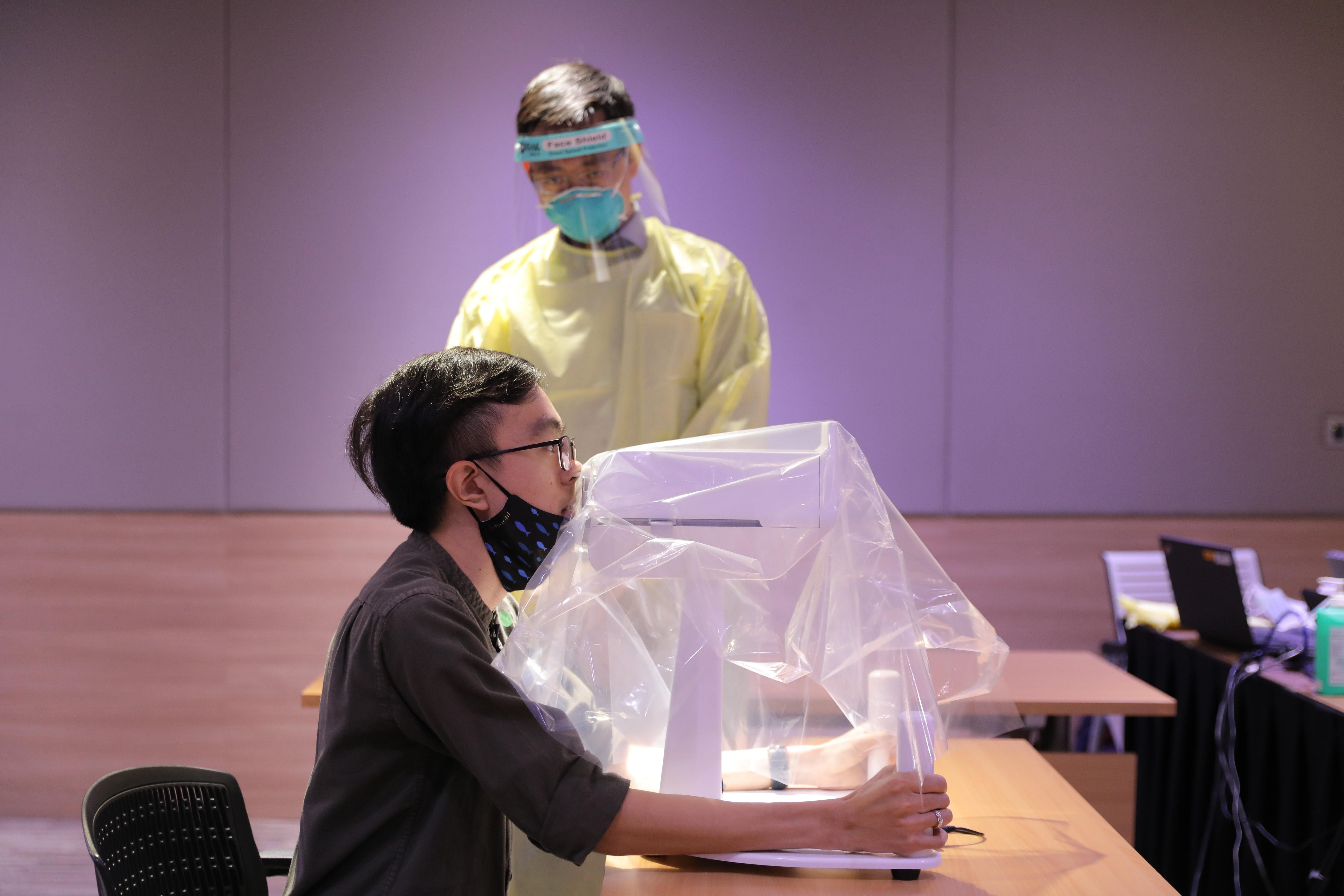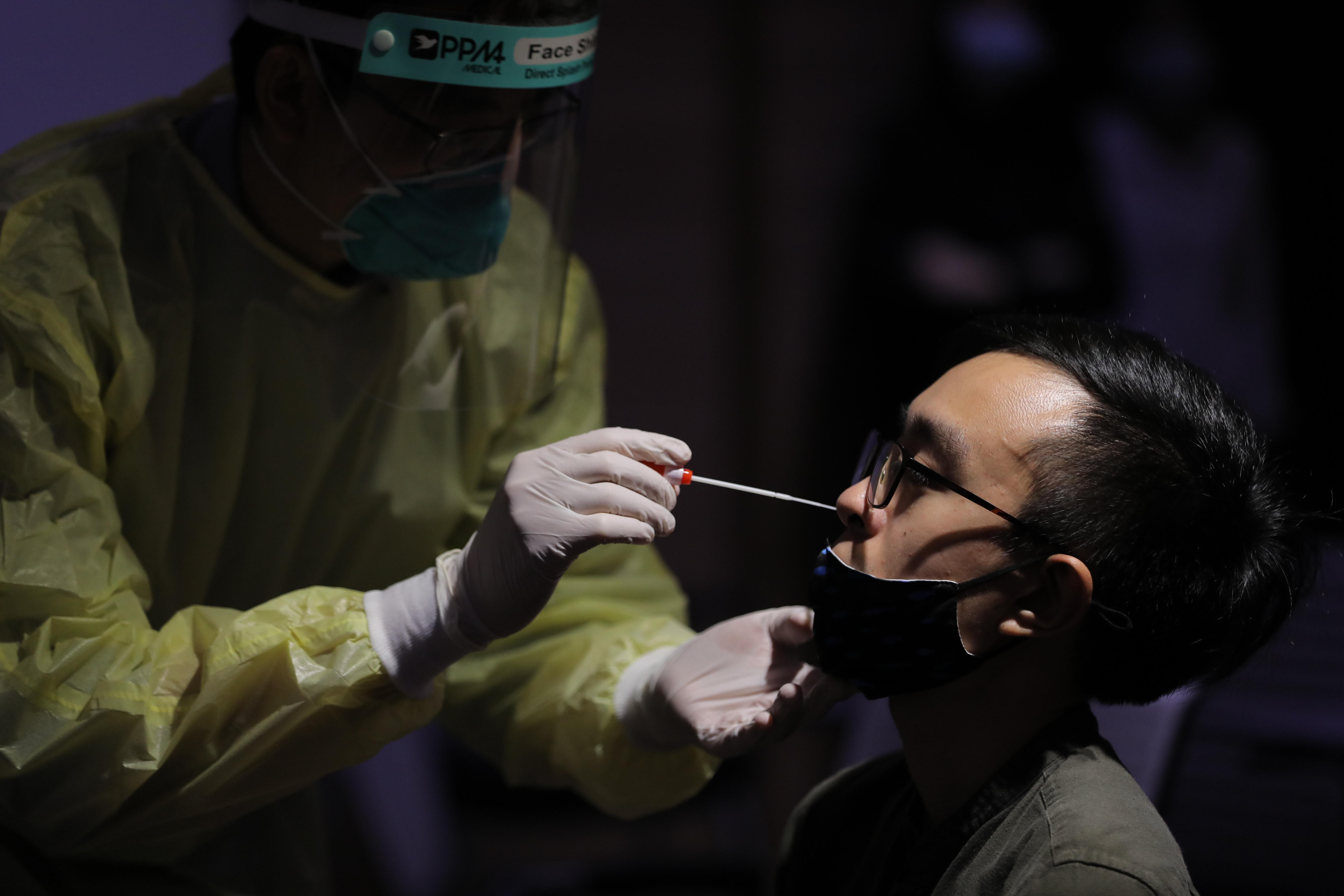SINGAPORE - I am not a person who likes getting things poked into me - whether it is needles, a scope, or any equipment at the dentist's. So when I was asked to get myself swab tested - not just once but four times - I was prepared for the worst.
Swab testing is a crucial part of Singapore's fight against the coronavirus, and the policy since July 1 has been for all patients aged 13 and above who are diagnosed with acute respiratory infection (ARI) to get tested for Covid-19.
But from July 1 to Aug 16, only about three in four such patients agreed to take a swab test.
Patients who decline the swab test are given five days of medical leave, during which they are legally required to stay at home. If a doctor assesses that a patient meets the suspect case definition, or has prolonged ARI at the end of the five-day period, the patient is legally required to go for a swab test.
According to the Ministry of Health (MOH), some patients said they were afraid of the discomfort from the swabbing process.
The MOH and doctors I spoke to had all said that the test is quick and causes only "slight discomfort". But being a sceptic, I wondered whether the authorities were downplaying the experience to encourage more people to come forward for testing.
I decided to try it out for myself, with considerable fear and trembling beforehand.
Test 1: Nasopharyngeal swab (conducted by SwabBot)
Process: A rotating swab is inserted to the back of the nasal cavity by a specially designed robot

I started with the test that I was most nervous about. Getting a stick poked into your nose by a cold, unfeeling hunk of metal is not exactly an experience you look forward to.
The interesting part about this method of swabbing is that the patient gets to decide when he is ready to begin. Once I hooked the tiny plastic nosepiece under my nostrils (a 100 per cent painless experience, as disconcerting as it may look), I pressed a button lightly with my chin to activate the swabbing process. In this seated position in front of the robot, it almost felt like I was taking a mechanised eye examination.
A gentle mechanical noise indicated that the swab was being moved towards my nose, and I braced myself for what I anticipated would be a burst of excruciating pain.
Instead, the feeling I got was similar to that when water gets in my nose accidentally when swimming. It smarted a little, but the machine was incredibly gentle - and the process was over in a few seconds.
It was not completely painless, but it was certainly not as painful as other experiences I have had before, like biting my lip or getting pinched - and definitely not painful enough to make me tear up.
Discomfort level: 3/10
Test 2: Nasopharyngeal swab (conducted by a human)
Process: A swab is inserted to the back of the nasal cavity by a healthcare professional, and rotated

Having let the machine have a go, I decided to see what the experience would be like when done by a human healthcare professional - in this case, Dr Paul Tern, a medical officer from the Department of Internal Medicine at Singapore General Hospital.
Several doctors I spoke to had said that some patients are most afraid of this particular swab, and tend to reflexively flinch or pull their heads away from the tester when the swab enters their nose.
Fortunately, Dr Tern took the time to explain the process to me. Knowing what to expect helped me to relax and not tense up.
I did not feel the swab at all until it hit the back of my nasal cavity, which was when I experienced the now-familiar sense of getting water up my nose while swimming.
This time, the pain was slightly more and I felt my eyes sting but not tear up.
Again, however, the process was over much faster than I expected - in a couple of seconds.
The ache in my nose lingered for a few minutes after this swab, although it may have been the result of getting swabbed in the same nostril twice. The same nostril was swabbed, and about three minutes after the previous test, so that I could compare the feeling.
Like the test done by SwabBot, this was not painless, but it definitely was not as painful as people had made it out to be - and far less unpleasant to me than getting an injection.
Discomfort level: 4/10
Test 3: Nasal swab
Process: A swab is inserted partially up the nose by a healthcare professional and rotated

This test was over before I knew it. Nasal swabs, Dr Tern explained to me, differ from nasopharyngeal swabs, as the swab is inserted only partially up the nose.
This makes it almost completely painless. For me, the sensation was like digging my nose and going a little too far.
Sadly, the lack of depth also means that such swabs need to be paired with other tests to be effective, such as the oropharyngeal swab.
Discomfort level: 1/10
Test 4: Oropharyngeal swab
Process: A swab is inserted to the back of the throat till it is touching the tonsils, and moved around to collect samples

This particular test uses a slightly thicker swab, which looks like a cotton bud. Dr Tern told me to open my mouth, stick out my tongue and keep saying "Aah" while he moved the swab to the back of my throat to collect samples.
I had thought this test would be the most pleasant of the four given that we usually put things in our mouths and down our throats, as opposed to putting them up our noses.
It turned out that I was half correct, as the process did not hurt at all. However, it led me to discover that I have a gag reflex I was unaware of.
Despite the complete absence of pain, I instinctively gagged when the swab touched the back of my throat, surprising me but not Dr Tern, who said that this happens with some patients.
It took another two tries before I could suppress my reflex and he could swab me properly.
It was a painless but rather uncomfortable (though enlightening) process for me, but patients who do not have as strong a gag reflex may find this test more pleasant than those involving the nose.
Discomfort level: 5/10
I had gone into the tests a sceptic, suspecting that the authorities and doctors might have been downplaying the discomfort to avoid scaring people away.
But none of the tests were as painful as I had imagined them to be, and certainly not as uncomfortable for me as other medical experiences such as having blood drawn or getting a scope - especially given that I was swabbed thrice in the same nostril, while most patients need to be swabbed only once in each nostril.
The tests are no walk in the park, and I certainly would not pay to keep taking them over and over again for fun.
But given that swabbing is free for those who are assessed to need it, and that it can grant peace of mind and help to protect not just the patients but also their loved ones and society as a whole, I would say they are to be appreciated and undertaken rather than avoided.











